Sarah Albee's Blog, page 12
April 27, 2015
Ad(s) Absurdum
I’m deep into image research for an upcoming book, and have been trawling old periodicals for advertisements. Here are some of my favorites–probably none of which I can use in my book, but I felt they deserved honorable mention here.

I love her come hither look.

From 1928, during Prohibition. Implied here is that whiskey was the go-to medication for colds and flu

From 1892: Look at the suggestions for who might need a loud whistle: ladies in the country, gold diggers, emigrants, cyclists

This and the next one remind me of that carnival scene in Chitty-Chitty Bang-Bang


Well, no-duh that Coca-Cola is marketed to the weary and despondent and people with mental exhaustion–it used to contain cocaine (which was legal)

The post Ad(s) Absurdum appeared first on Sarah Albee.
April 22, 2015
Guest Post Today!
 I hope you’ll head on over to the Little Crooked Cottage website, where I have a guest post about my five favorite nonfiction books!
I hope you’ll head on over to the Little Crooked Cottage website, where I have a guest post about my five favorite nonfiction books!
The post Guest Post Today! appeared first on Sarah Albee.
April 20, 2015
A Powerful Punch
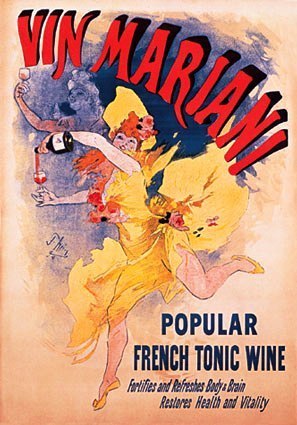 In 1863 a French chemist and patent medicine maker named Angelo Mariani combined wine and coca and called it Vin Mariani. The combination of cocaine and alcohol must have packed a powerful wallop. The “tonic wine” became extremely popular for “overworked men, delicate women,” and even “sickly children.”
In 1863 a French chemist and patent medicine maker named Angelo Mariani combined wine and coca and called it Vin Mariani. The combination of cocaine and alcohol must have packed a powerful wallop. The “tonic wine” became extremely popular for “overworked men, delicate women,” and even “sickly children.”
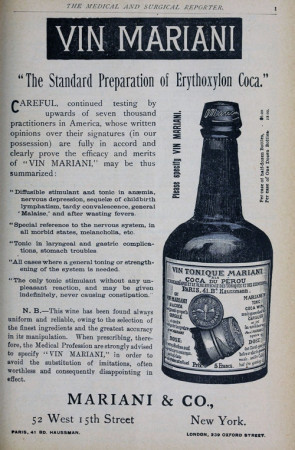 Ulysses S. Grant drank the cocaine-enhanced tonic. So did President William McKinley and Queen Victoria.
Ulysses S. Grant drank the cocaine-enhanced tonic. So did President William McKinley and Queen Victoria.
Mariani sent cases of his health tonic to celebrities, asking in return only that they send him a picture of themselves along with a note telling him what they thought of it. Evidently a lot of them liked it, as Mariani’s product was advertised with some pretty famous celebrity endorsements.
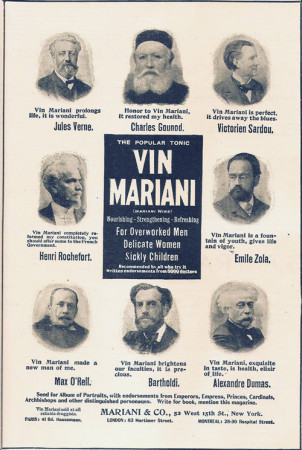 Here’s one from the Pope:
Here’s one from the Pope: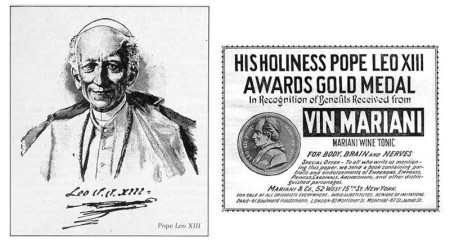 A couple other celebs you might have heard of:
A couple other celebs you might have heard of:
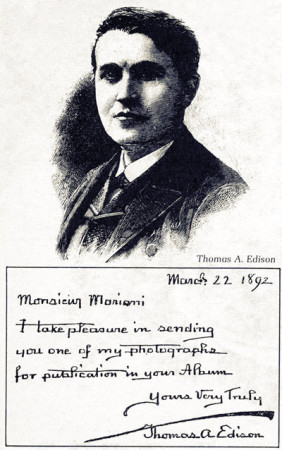
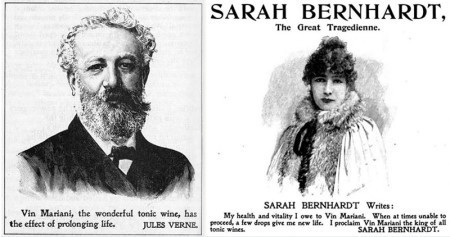 Coca Cola was created as a competitor of Vin Mariani. Because alcohol was banned in the state of Georgia, the creator, John Pemberton, created an alcohol-free version of Vin Mariani in 1886 that included coca leaves and Kola nuts.
Coca Cola was created as a competitor of Vin Mariani. Because alcohol was banned in the state of Georgia, the creator, John Pemberton, created an alcohol-free version of Vin Mariani in 1886 that included coca leaves and Kola nuts.
Cocaine was legal in the United States until 1914.
sources:
Howard, Markel, An Anatomy of Addiction
James Hamblin, "Why We Took Cocaine Out of Soda," The Atlantic 1/31/13
The post A Powerful Punch appeared first on Sarah Albee.
April 16, 2015
The Dreaded Sweate (A Re-posting)
Last week while I was watching the PBS miniseries Wolf Hall, my son happened to wander in during a particularly sad scene and, immediately intrigued, asked me what was going on. Without spoiling it for you if you haven’t seen it, or read the book, I’ll just say that I explained to him that someone had died of sweating sickness. He had never heard of it. I thought I’d re-post this blog that I wrote four years ago, in case there are others who might be interested in learning more about this awful and mysterious disease.

English physician John Caius
Two nights ago, I had one of those shivery, low-grade fevers. I’ve certainly felt way worse, but I didn’t feel up to anything more than lying on the couch and watching NBA playoffs. I happen not to be someone who sweats a lot—not to give you TMI, but please bear with me, as it’s relevant—and yet in the middle of the night I woke up drenched in sweat, the fever having broken. Which led me to the subject of today’s blog—that dreadful disease that swept through the sixteenth century for just about a hundred years, and then vanished as mysteriously as it had appeared: The Sweating Sickness, or The Sweats, as it was called.
As I lay there in the middle of the night, I knew I was fine. But I thought about how terrifying such symptoms would have been for people of the sixteenth century, and how many of them would have been dead within hours.

Henry, Duke of Suffolk, who died of the Sweats

His brother, Charles, who also got it–they died hours apart
Henry VIII’s older brother died of it. Thomas Cromwell’s wife and daughters all died of it. Ann Boleyn had it, but survived it. It wasn’t a disease of poverty and filth, as so many others seemed to be. The Duchess of Suffolk’s sons, Henry and Charles, died of it (see pictures–I find them especially poignant, perhaps because they were painted by the masterful Hans Holbein). During especially bad outbreaks, whole towns succumbed to the disease (according to some accounts, in places where it struck, 80 to 90% of the local population died of it). Thousands upon thousands of people died of this mysterious and highly contagious disease. Its cause continues to mystify medical historians.
The brief but terrifying visitation of the disease first occurred in 1485, then reappeared in four subsequent outbreaks, the last of which was 1551, after which it never reappeared. It seemed to favor the young and healthy. The last outbreak was witnessed and written about by the English physician, John Caius (or Kaye), whose pamphlet “The Sweate” was published in 1552.
The disease struck without warning, beginning with a chill and tremors, followed by a fever and profuse sweating. His description of symptoms included abdominal pains, headache, delirium, “passion of the heart” (some form of tachycardia), and “a marveilous heavinesse and a desire to sleape.”
The disease moved with frightening speed, killing many people within two or three hours. As one chronicler put it, there were “some merry at dinner and dedde at supper.”
Source: Hans Zinsser, Rats, Lice, and History, 1947
The post The Dreaded Sweate (A Re-posting) appeared first on Sarah Albee.
April 13, 2015
New England Swing
This past Friday and Saturday I had two days of fun-time author stuff. On Friday I was on an author panel at the School Librarians of Rhode Island (SLRI) annual conference. Here’s our panel in action:

From left to right, Marc Tyler Nobleman, Erin Dionne, Melissa Stewart, Sarah Brannen, Meghan McCarthy, and me.

Here we are, holding our own books…

. . . and one anothers’ books. Front and center is our fabulous moderator, Susannah Richards.
After our panel, I headed up to Portland, Maine. On Saturday, I signed books at the Cape Author Fest in Cape Elizabeth. It’s a fantastic area, full of book-lovers. Two of my favorite teachers/Nerdy Book Clubbers, Melissa Guerrette and Jason Lewis, stopped by:

Me and Melissa

Me and Jason
And I actually remembered to snap a few shots of some of my author pals:

Susan Hood

Liza Woodruff

Sarah Dillard

Lynda Mullaly Hunt

Amanda Marrone and her giant bug.
The post New England Swing appeared first on Sarah Albee.
April 9, 2015
Authorizing
 Tomorrow, April 10th, I’m going to be on an author panel in Providence, Rhode Island at the annual conference of SLRI–School Librarians of Rhode Island. My fellow panelists include Melissa Stewart, Sarah Brannen, Erin Dionne, Meghan McCarthy, and Marc Tyler Nobleman, and our moderator is Susannah Richards. Our panel is called “Finding the ARC in Facts and Fiction.”
Tomorrow, April 10th, I’m going to be on an author panel in Providence, Rhode Island at the annual conference of SLRI–School Librarians of Rhode Island. My fellow panelists include Melissa Stewart, Sarah Brannen, Erin Dionne, Meghan McCarthy, and Marc Tyler Nobleman, and our moderator is Susannah Richards. Our panel is called “Finding the ARC in Facts and Fiction.”
And on Saturday, April 11th, I’ll be in Cape Elizabeth, Maine, signing books at the Cape Author Fest, from 10 to 2 pm at Cape Elizabeth High School. They’ve got an amazing roster of authors and illustrators–and some (including me) posted videos here. If you’re in the neighborhood, please stop by and say hello!
The post Authorizing appeared first on Sarah Albee.
April 6, 2015
Hey, Doll

Wellcome Images
In my last couple of posts, I discussed how the Christian church used to forbid physicians from cutting into bodies, which left them with few diagnostic tools besides examining urine and feeling pulses. Traditional Chinese medicine took it a step further. From about the 1700s to the 1950s, aristocratic ladies (or their servants) remained hidden behind a curtain. The doctor would hand over a “diagnostic doll” and the woman, revealing just her hands through the curtain, would point to the place on the doll that corresponded to the place on her own body that hurt.

Wellcome Images
The post Hey, Doll appeared first on Sarah Albee.
April 2, 2015
Author Visit
Last week I spent the day at West Rock Author’s Academy School in New Haven, CT. Here’s what greeted me in the entryway:
 and along my way to the library:
and along my way to the library:

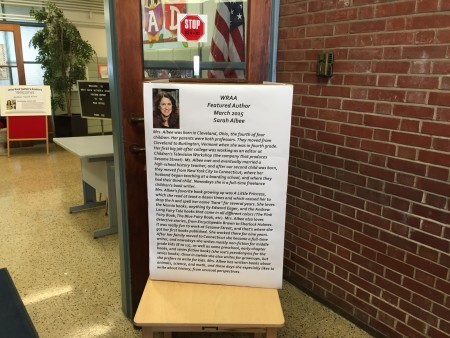 I did three presentations, to groups from pre-K through fourth grade. The kids were so interested and enthusiastic, and well prepared with questions. We talked about research, the revision process, and where a writer gets her ideas, and, with the younger kids, I enlisted volunteers who donned costumes and performed the roles in my Dragon’s Scales book, which we read together.
I did three presentations, to groups from pre-K through fourth grade. The kids were so interested and enthusiastic, and well prepared with questions. We talked about research, the revision process, and where a writer gets her ideas, and, with the younger kids, I enlisted volunteers who donned costumes and performed the roles in my Dragon’s Scales book, which we read together.

I Not sure if you can see this display clearly in the photo below, but it’s a montage about the writing process. It says: “What Do Great Authors Do?/Plan/Draft/Self-Edit/Partner-Edit/Editor (Real Authors have an Editor to check their writing.)” Yep. That pretty well sums up what I do. It’s meant for kid-authors, but the process closely mirrored what I spoke about to the kids for my own process. They’re getting great writing advice at WRAA.
Not sure if you can see this display clearly in the photo below, but it’s a montage about the writing process. It says: “What Do Great Authors Do?/Plan/Draft/Self-Edit/Partner-Edit/Editor (Real Authors have an Editor to check their writing.)” Yep. That pretty well sums up what I do. It’s meant for kid-authors, but the process closely mirrored what I spoke about to the kids for my own process. They’re getting great writing advice at WRAA.
 Huge thanks to Cynthia Hodge for arranging the day, and to her teacher/librarian/administrator colleagues for inviting me to visit classrooms all afternoon. What a day!
Huge thanks to Cynthia Hodge for arranging the day, and to her teacher/librarian/administrator colleagues for inviting me to visit classrooms all afternoon. What a day!
The post Author Visit appeared first on Sarah Albee.
March 30, 2015
A Hand on the Pulse
In my last post, I discussed the limited diagnostic options that were available to physicians, who spent a lot of time examining urine and taking pulses. As a follow up to the examining urine series, here is a series showing patients having their pulses taken. Part of me wishes doctors still dressed like this.







The post A Hand on the Pulse appeared first on Sarah Albee.
March 26, 2015
The Flask at Hand
Medieval and Renaissance-era physicians were forbidden by the Church to cut into a body, living or dead. That distasteful work was left to the barber surgeons. So in order to diagnose a patient’s problem, physicians couldn’t do much besides checking the patient’s pulse and examining the person’s “output,” i.e., his urine (and, occasionally, poop).
I’ve been doing image research for a book, and it’s extraordinary how many pictures you stumble across of physicians examining urine. Have a look: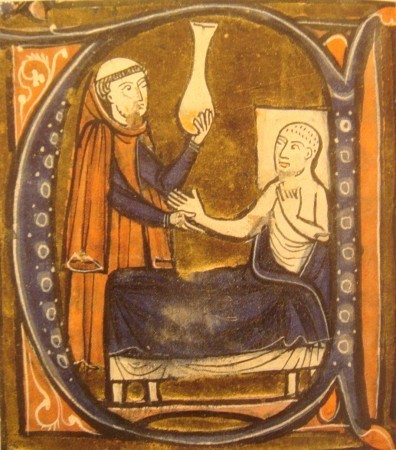
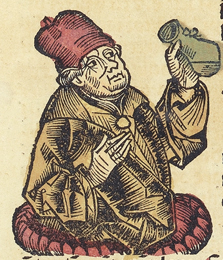
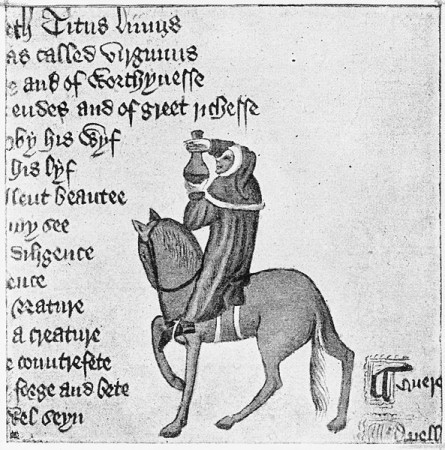
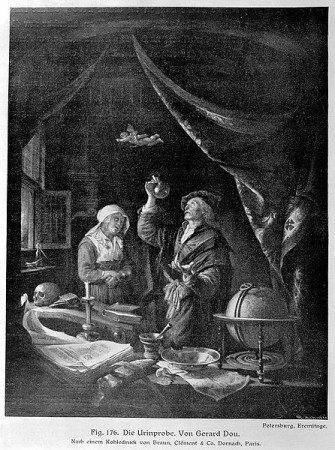
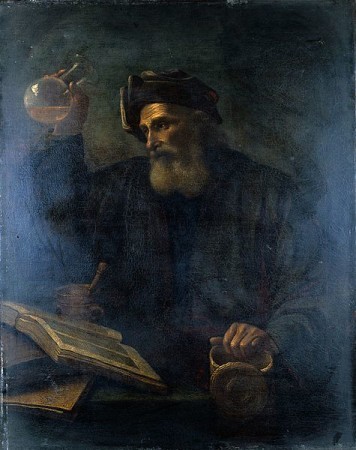
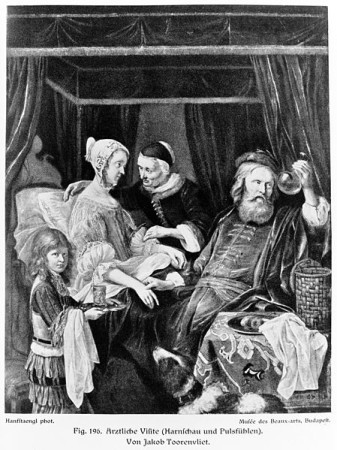
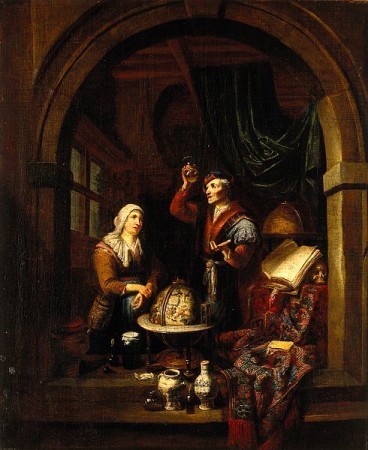
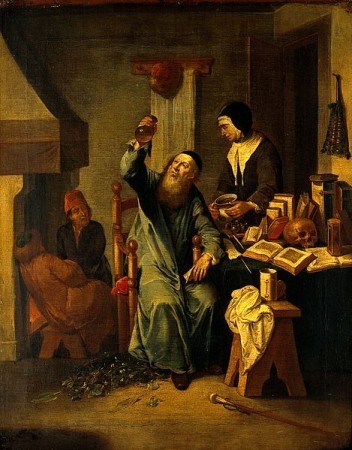 A
A 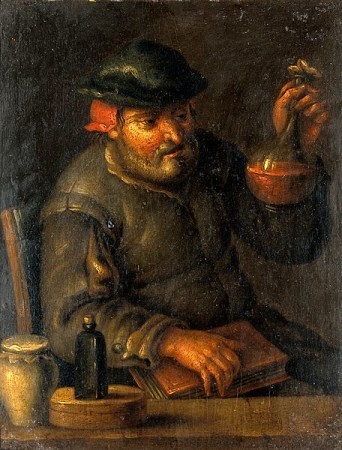
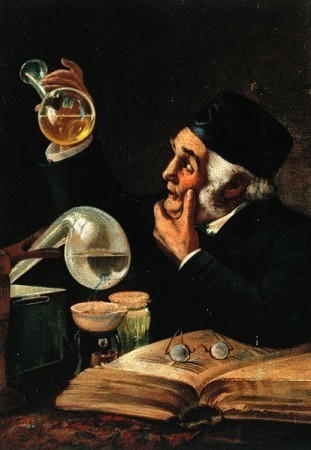
The post The Flask at Hand appeared first on Sarah Albee.



